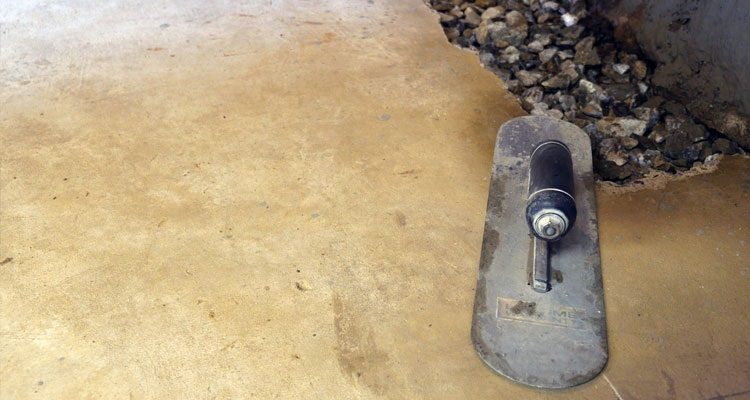Maintaining a home is a tough job. No matter how hard we try, certain issues occur almost every year. And in countries like our beloved Canada, where rain and snow can last longer than just a few months, we face water damage on a daily basis.
Whether window leaks or severe basement floods, water issues won’t stop. Not on their own, that is. Experience has shown me that unless I decide to properly protect my home (even if it means stretching my budget) nothing can stop the damage from happening.
Good things don’t come easy and we can all agree that a healthy living environment is worth the effort!
However, deciding that you need an updated basement waterproofing system won’t cut it. You also need to choose which one is ideal for your home. To make the right choices, always consult with professionals.
In the meantime, here is what you should know:
- Full or Partial
Before you choose your home’s waterproofing system, you need to get educated on all the options out there. First, you can choose between partial repairs and full replacements. If you opt for the latter, you will have to choose the method (exterior or interior).
To opt for partial repairs and easy fixes means that your basement isn’t in such a bad condition. Small repairs are ideal for situations like sump pump failure, small cracks, window leaks, high humidity levels, condensation, and damp walls.
But you must consult with professionals. The situations listed above can also be signs for more complicated damage. Thoroughly investigate the signs and find out whether you need to update your basement’s entire waterproofing system.
Full replacements are usually done for more crucial problems such as frequent basement floods, cracked foundations, severe mold growth, sewer backups, backyard flooding, clogged or detached sewer drains, movement in walls, etc.
- Basement Waterproofing Methods
If your basement is facing more complicated issues, your contractors probably recommended a new basement waterproofing system. There are two ways you can go: exterior and interior. Remember that the choice you make must depend on your home’s characteristics.
Exterior basement waterproofing is more expensive and time consuming. Both methods work with drain tiles and sump pumps. The difference is that exterior is placed around your house whereas interior is placed beneath the basement.
The first collects and drains the excess water before it reaches the interior while the second gathers it and pumps it out as soon as it gets inside. Exterior waterproofing can prove to be more efficient in some situations since with it, there is no way for your walls and floors to get damp.
Interior waterproofing is highly recommended for unfinished basements because there will be less manual work and digging involved. In any case, you must consult with professionals before you make the choice.
- Timing of Installation
This advice might sound silly to some, but surprisingly enough, tons of homeowners forget about it. Plumbing and construction are time consuming. Sometimes, they can even last up to a few months. That’s why you should always plan construction work in spring or summer.
Waterproofing your basement right before fall is very smart. Your waterproofing system will face the ultimate challenge and you will see whether the right choices were made early on (very useful for warranties).
Additionally, you should plan your days wisely. Don’t forget that you will be hearing hammers knocking nails all day long. Postpone those parties and anniversaries since construction work really does take a while!
Feel free to ask your contractors about the longevity of the project and about the details. If they are professionals, they will be happy to share with you every bit of information.
- Your Current Situation
The most important thing you should consider before doing basement waterproofing is yourself! What are your future plans, both with your life and your basement? Ask yourself questions like:
- When do I plan on moving out?
- What do I want to do with my basement?
- Is my home too old or too damaged? Can the basement be fixed at all?
- What kind of financial situation am I in?
- Will basement repair add value to my home?
After brainstorming and getting the needed answers, the solution will immediately appear! If you plan on moving out in a year, opt for partial repairs!
If you want to increase home value and your budget isn’t tight, choose to upgrade your basement! Modern homebuyers love to walk into fully functional and updates homes.
Obviously, if you plan on staying a longer time, basement work is necessary since you want to live in a safe and functional environment.
Finally, plan your budget wisely! New kitchen cabinets and patios won’t matter much if house is always moldy and flooded!
- Preparing for Installation
Last, but not least is proper preparation. Before any construction project or repair, homeowners must prepare their home. If you have lots of stuff in your basement, consider renting a storage unit where you will place the belongings until the job is finished.
Previously we discussed how exterior basement waterproofing is a time consuming project. Additionally, it involves a ton of digging around your home. If you have beautiful flowers in those areas, find ways to extract them from the ground and plant them somewhere else to keep them safe.
Think of parking space as well. Find alternate solutions for every obstacle before the experts start doing their jobs. You don’t want to find yourself in a mess during those noisy and extravagant repairs.
If you don’t know what’s needed to be done, ask the professionals about details and advice on home preparation. They will explain the process in detail so you could know where to put your focus on.


